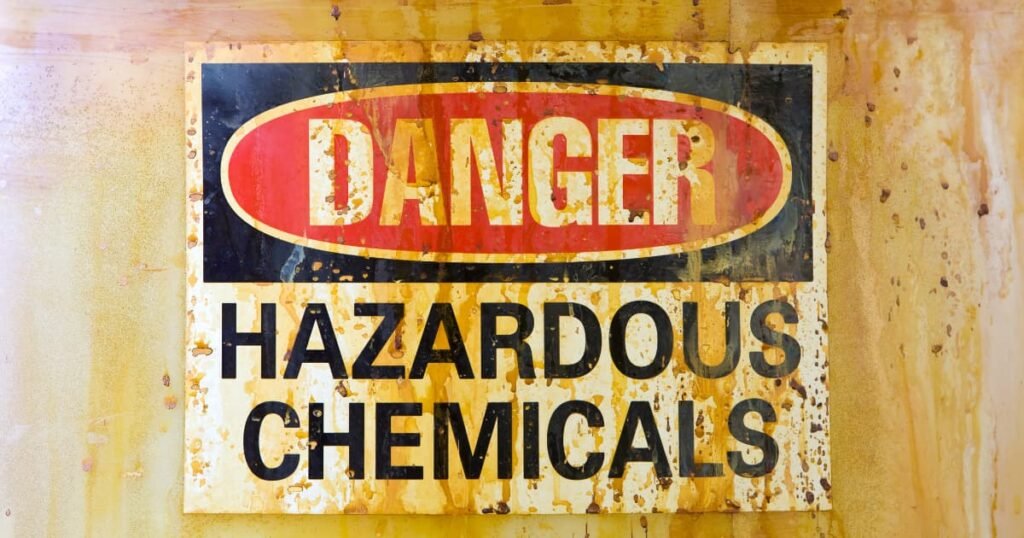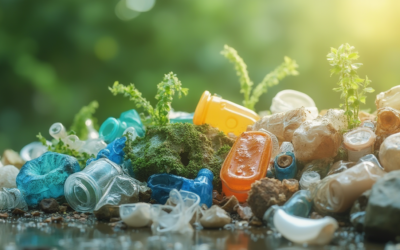Plastics are ubiquitous in food packaging due to their convenience and durability. However, their use comes with significant health risks. This blog post explores the health consequences of plastics in food packaging, especially when heated or cut, and highlights studies showing the impact on human development and health.
Table of Contents
Health Risks of Plastics in Food Packaging
Chemical Migration and Exposure
Plastics contain thousands of chemicals, many of which can migrate into food and beverages.
- Chemical Migration: Over 12,000 chemicals are used in the production of food contact materials, including harmful substances like bisphenol A (BPA), phthalates, and per- and polyfluoroalkyl substances (PFAS). These chemicals can leach into food, especially when plastics are heated or come into contact with fatty or acidic foods(Earth.com) (Food Packaging Forum).
- Exposure Levels: Studies have shown that food packaging is a significant source of chemical exposure, often at levels much higher than pesticide residues. These chemicals are not always listed as ingredients, making it difficult for consumers to avoid them (BioMed Central).

Endocrine Disruptors
Many chemicals in plastics act as endocrine disruptors, interfering with hormone function.
- Hormonal Disruption: Endocrine-disrupting chemicals (EDCs) like BPA and phthalates mimic or inhibit natural hormones, leading to developmental, reproductive, and metabolic issues. These chemicals can alter hormone levels, block hormone receptors, and interfere with hormone synthesis (Earth.com).
- Developmental Effects: Exposure to EDCs during critical periods of development, such as pregnancy and early childhood, can lead to long-term health consequences, including behavioral changes and decreased fertility (Food Packaging Forum).

Health Consequences of Heating and Cutting Plastics
Heating and cutting plastics can increase the release of harmful chemicals into food.
- Heating Plastics: When plastics are heated, such as in a microwave, the likelihood of chemical leaching increases. Heating can cause the breakdown of plastic polymers, releasing toxic chemicals into the food. It’s recommended to avoid heating food in plastic containers and to use alternatives like glass or ceramic instead (Earth.com) (Upstream).
- Cutting Plastics: Cutting or damaging plastic packaging can also enhance chemical migration. Sharp edges and surfaces can create pathways for chemicals to leach into the food. Therefore, it’s essential to handle plastic packaging carefully and consider safer alternatives for food storage.

Studies Highlighting the Health Impacts
Developmental and Reproductive Health
Numerous studies have linked chemicals in plastics to adverse developmental and reproductive outcomes.
- Developmental Issues: Research has shown that exposure to EDCs like BPA and phthalates can lead to developmental delays, decreased IQ, and behavioural problems in children. These chemicals interfere with the endocrine system, which is crucial for growth and development (Upstream).
- Reproductive Health: EDCs are also associated with reproductive health issues, including decreased fertility and increased risk of certain cancers. These chemicals can disrupt the normal functioning of reproductive hormones, leading to long-term health effects (BioMed Central).

Chronic Health Conditions
Long-term exposure to chemicals in plastics is associated with chronic health conditions.
- Chronic Diseases: Continuous exposure to low levels of toxic chemicals from plastics can contribute to the development of chronic diseases such as diabetes, obesity, and cardiovascular diseases. The cumulative effect of these chemicals on the body’s endocrine system and metabolic processes plays a significant role in these health outcomes (Food Packaging Forum) (BioMed Central).
- Immune System Dysfunction: Certain chemicals in plastics, like PFAS, have been linked to decreased immune response, making individuals more susceptible to infections and diseases. These chemicals can persist in the body for years, continually affecting health (Upstream).

Conclusion
The health risks associated with plastics used in food packaging are significant and well-documented. From chemical migration and endocrine disruption to the impacts of heating and cutting plastics, it’s clear that these materials pose a threat to human health. By choosing safer alternatives and advocating for better regulations, we can reduce our exposure to these harmful chemicals.
Learn more about the health risks of plastics and discover safer alternatives by visiting our website. Join us in advocating for healthier and safer food packaging solutions.




